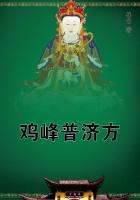He did not intend, however, to confine himself to preaching.He was in secret communication with the priest of Niklashausen and with two knights, Kunz of Thunfeld and his son, who accepted the new gospel and were singled out as the military leaders of the planned insurrection.Finally, on the Sunday preceding the day of St.Kilian, when the shepherd believed his power to be strong enough, he gave the signal.He closed his sermon with the following words: "And now go home, and weigh in your mind what our Holiest Madonna has announced to you, and on the coming Saturday leave your wives and children and old men at home, but you, you men, come back here to Niklashausen on the day of St.Margaret, which is next Saturday, and bring with you your brothers and friends, as many as they may be.Do not come with pilgrims' staves, but covered with weapons and ammunition, in one hand a candle, in the other a sword and a pike or halberd, and the Holy Virgin will then announce to you what she wishes you to do." But before the peasants came in masses, the horsemen of the bishop seized the prophet of rebellion at night, and brought him to the Castle of Wuerzburg.On the appointed day, 34,000 armed peasants appeared, but the news had a discouraging effect on the mass; the majority went home, the more initiated retained about 16,000 with whom they moved to the castle under the leadership of Kunz of Thunfeld and his son Michael.The bishop, by means of promises, persuaded them to go home, but as soon as they began to disperse, they were attacked by the bishop's horsemen, and many were imprisoned.Two were decapitated, and Hans the Piper was burned.Kunz of Thunfeld fled, and was allowed to return only at the price of ceding all his estates to the monastery.Pilgrimages to Niklashausen continued for some time, but were finally suppressed.
After this first attempt, Germany remained quiet for some time;but at the end of the century rebellions and conspiracies of the peasants started anew.
We shall pass over the Dutch peasant revolt of 1491 and 1492 which was suppressed by Duke Albrecht of Saxony in the battle near Heemskerk;also the revolt of the peasants of the Abbey of Kempten in Upper Suabia which occurred simultaneously, and the Frisian revolt under Shaard Ahlva, about 1497, which was also suppressed by Albrecht of Saxony.These revolts were mostly too far from the scene of the actual Peasant War.In part they were struggles of hitherto free peasants against the attempt to force feudalism upon them.We now pass to the two great conspiracies which prepared the Peasant War: the Union Shoe and the Poor Konrad.
The rise in the price of commodities which had called forth the revolt of the peasants in the Netherlands, brought about, in 1493, in Alsace, a secret union of peasants and plebeians with a sprinkling of the purely middle-class opposition party; and a certain amount of sympathy even among the lower nobility.The seat of the union was the region of Schlettstadt, Sulz, Dambach, Rossheim, Scherweiler, etc.The conspirators demanded the plundering and extermination of the Jews, whose usury then, as now, sucked the blood of the peasants of Alsace, the introduction of a jubilee year to cancel all debts, the abolition of taxes, tons and other burdens, the abolition of the ecclesiastical and Rottweil (imperial) court, the right to ratify taxation, the reduction of the priests' incomes to a prebend of between fifty and sixty guilders, the abolition of the auricular confession, and the establishment in the communities of courts elected by the communities themselves.The conspirators planned, as soon as they became strong enough, to overpower the stronghold of Schlettstadt, to confiscate the treasuries of the monasteries and the city, and from there to arouse the whole of Alsace.The banner of the union to be unfurled at the moment of insurrection, contained a peasant's shoe with long leather strings, the so-called Union Shoe, which gave a symbol and a name to the peasant conspiracies of the following twenty years.
The conspirators held their meetings at night on the lonesome Hungerberg.Membership in the Union was connected with the most mysterious ceremonies and threats of severest punishment against traitors.Nevertheless, the movement became known about Easter Week of 1493, the time appointed for the attack on Schlettstadt.The authorities immediately intervened.
Many of the conspirators were arrested and put on the rack, to be quartered or decapitated.Many were crippled by chopping their hands and fingers, and driven out of the country.A large number fled to Switzerland.The Union Shoe, however, was far from being annihilated and continued its existence in secret.Numerous exiles, spread over Switzerland and south Germany, became its emissaries.Finding everywhere the same oppression and the same inclination towards revolt, they spread the Union Shoe over the territory of present-day Baden.The greatest admiration is due the tenacity and endurance with which the peasants of upper Germany conspired for thirty years after 1493, with which they overcame the obstacles to a more centralised Organisation in spite of the fact that they were scattered over the countryside, and with which, after numberless dispersions, defeats, executions of leaders, they renewed their conspiracies over and over again, until an opportunity came for a mass upheaval.
In 1502, the bishopric of Speyer, which at that time embraced also the locality of Bruchsal, showed signs of a secret movement among the peasants.The Union Shoe had here reorganised itself with considerable success.About 7,000 men belonged to the Organisation whose centre was Untergrombach, between Bruchsal and Weingarten, and whose ramifications reached down the Rhine to the Main, and up to the Margraviate of Baden.













